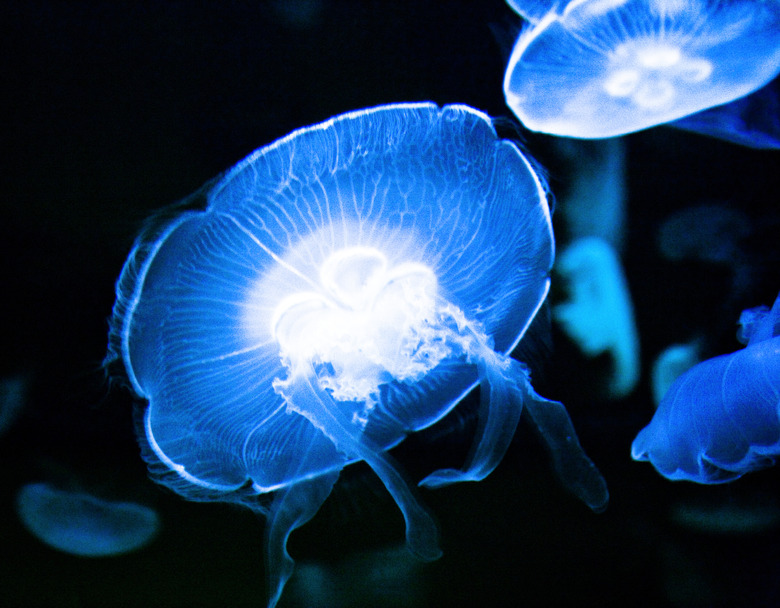Jellyfish Adaptations
Jellyfish are clear, dome-shaped aquatic creatures. Throughout the watery areas of the world lie hundreds of different jellyfish species. Although very simple in physiology, jellyfish can be very beautiful and peaceful looking. They also sport many interesting adaptations to help them live in the water. These features make studying jellyfish very entertaining.
Defensive Adaptations
Defensive Adaptations
Although jellyfish have developed many ways to move through the water in which they live, they tend to be slow creatures. This means that when a predator attacks, jellyfish may have a hard time getting away, as they cannot quickly flee. One of the most interesting things about jellyfish is the groups of stinging tentacles they have. These tentacles can help defend the jellyfish. The size and number of tentacles and stinging cells, as well as the potency of the sting, depends on the type of jellyfish. Stings can be quite painful, or may even paralyze other fish. Some jellyfish, such as the lion's mane jelly, develop symbiotic relationships with other fish. The fish live near the tentacles, picking up scrap foods, and protect the jellyfish from larger predators.
Feeding Adaptations
Feeding Adaptations
Aside from using their tentacles, jellyfish often sting their prey in order to quickly stun it and keep it from escaping. This can make feeding much easier for the jellyfish. Even jellyfish that do not sting their prey use their tentacles when feeding. The tentacles can reach out and push food items toward the mouth of the jellyfish.
Movement Adaptations
Movement Adaptations
Although a somewhat ungainly shape for swimming, jellyfish have developed a few ways in which to propel themselves through the water. Some jellyfish prefer to float, letting the current carry them here and there. Because their bodies are made up of about 90 percent water, floating is very natural. Other jellyfish use muscles in their main body to swim. These muscles, which ring the entire bell shape, move up and down, undulating, to create movement.
Brain, Digestive and Respiratory Systems
Brain, Digestive and Respiratory Systems
Jellyfish do not have brains. Instead, they sport a network of nerves, which run throughout their entire body. These nerves can help the jellyfish sense things in all directions. They can sense predators and food. Jellyfish have a digestive system that uses a special lining to absorb nutrients. No respiratory system is necessary, as gases can diffuse through the thin membranes of the jellyfish.
Cite This Article
MLA
LaPan, Ann. "Jellyfish Adaptations" sciencing.com, https://www.sciencing.com/jellyfish-adaptations-10061435/. 13 March 2018.
APA
LaPan, Ann. (2018, March 13). Jellyfish Adaptations. sciencing.com. Retrieved from https://www.sciencing.com/jellyfish-adaptations-10061435/
Chicago
LaPan, Ann. Jellyfish Adaptations last modified March 24, 2022. https://www.sciencing.com/jellyfish-adaptations-10061435/
